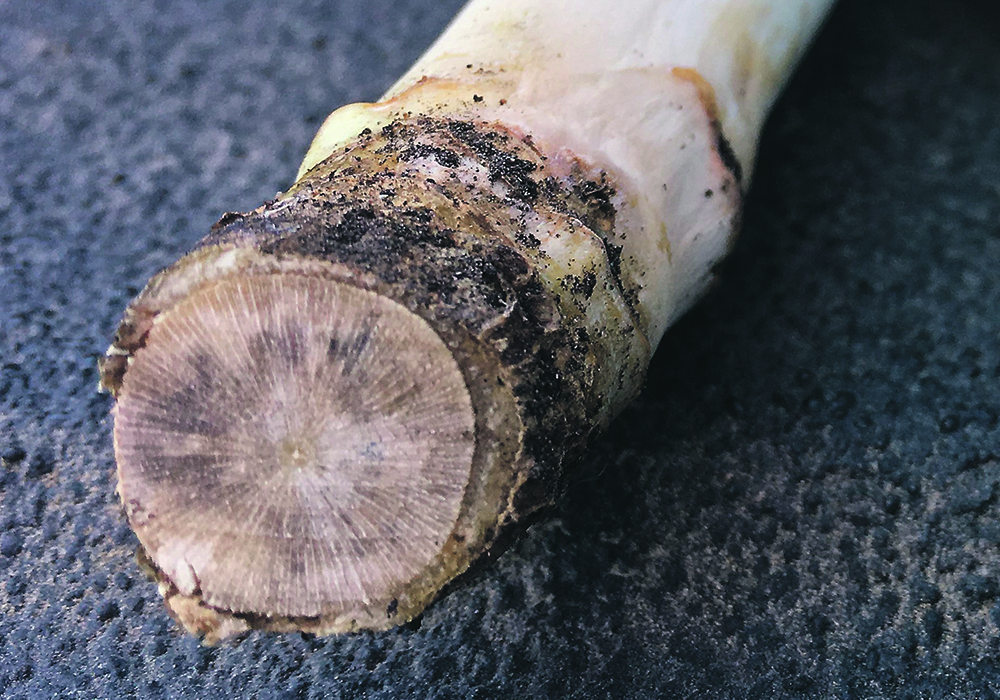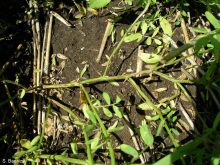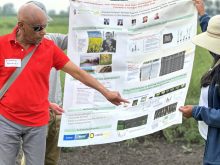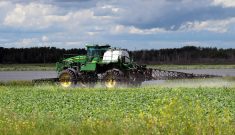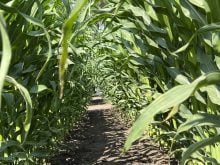A U of A study just wrapped up, and four Canola Agronomic Research Program projects are now investigating the disease
Glacier FarmMedia – If you’re a canola grower on the Prairies, you know there are no chemical solutions or varieties to kill or resist soil-borne verticillium stripe disease.
You may also know the handful of management practices that can thwart the disease to some extent. And if a crop has been damaged by it, you probably want to know when resistant varieties or herbicides will be available.
If so, you’d have something in common with research scientists on that question.
Read Also

Crop quality looks good this year across Prairies
Crop quality looks real good this year, with the exception of durum.
“There’s still a very large focus on actually just trying to understand the pathogen a little further. What conditions make it better or worse? What’s making it tick?” said Breanna Miller, a Manitoba-based agronomist and point person on verticillium for the Canola Council of Canada.
”We do have a lot of base information we’re still trying to learn so novel solutions and resistance packages are in fairly early development yet,” she said, adding the disease is a key research priority for the council.
But even if a resistant canola variety was found tomorrow, it would take years of research and development, breeding, testing, regeneration and government approval before it would touch farmer soil.
“Being a soil-borne disease, they’re very complex and we’re kind of starting from the ground up on our knowledge,” said Miller. “It was only first discovered in Manitoba in 2014, with studies starting into 2018, 2019 just to kind of understand the disease a little bit.”
Verticillium stripe, caused by the verticillium longisporum pathogen, infects roots and enters the plant’s vascular system. It’s now present in all three Prairie provinces.
Last year in August, a federal-provincial survey appraised 129 canola crops in Manitoba’s major canola production centres. According to the canola council website, the surveyors found an average disease prevalence (percentage of fields that have infection) of 29 per cent and an average incidence percentage (percentage of plants with disease symptoms) of 11 per cent.
Although the prevalence was down from 2022, when it was 38 per cent, it’s still a sign of a growing trend, said Miller.
“At the moment about a third of the Manitoba canola crops surveyed have seen verticillium.”
The 2023 Saskatchewan Agriculture general canola disease survey was done in 218 fields. Results were recorded a little differently, with confirmed verticillium in 25 fields in 23 rural municipalities. According to the council, SaskCanola also expanded its disease testing program in 2023 to include verticillium stripe, which found the disease in an additional 16 municipalities, bringing the total to 39.
Alberta’s 2023 disease survey was done in 356 fields and resulted in a verticillium prevalence of 18.2 per cent and an incidence of 0.9 per cent.
“We are in a bit of a hot spot here in Manitoba, it seems, but it is something that is affecting all three Prairie provinces now,” said Miller.
Although solutions may seem distant, researchers are taking action. A project started in 2019 by Sheau-Fang Hwang and Stephen Strelkov with the University of Alberta was recently completed. The results established a connection between blackleg and verticillium, concluding that extra measures may be needed to control blackleg where verticillium is present.
“This one is kind of where a lot of our base information started from,” said Miller.
Additionally, four Canola Agronomic Research Program projects are investigating the disease this year. The program is funded by the three provincial canola grower organizations and administered by the canola council. Projects are selected for funding by canola growers.
One study seeks to better understand verticillium in canola with a comprehensive survey and a disease nursery in Morden, Man. Researchers are also exploring the interactions between blackleg and verticillium in field conditions. The goal is to assess the combined effects of the two diseases on canola at various growth stages.
The latter study is also screening canola lines and accessions for verticillium resistance and evaluating the disease’s seed infection rate on disease severity. Another project is investigating the compound effect of blackleg and verticillium on susceptible and blackleg-resistant canola.
Finally, researchers are hoping to provide critical genetics and genomics knowledge by collecting and characterizing widespread longisporum isolates on the Prairies.
“There is also work being done on the effect (of verticillium) on other crops in the crop rotation, what role some other crops might play and if there are any genetics we can take from other crops to work on this resistance,” said Miller.
“So we still have a ways to go, but we’re learning a lot about the pathogen itself in the moment. We’re kind of working from the ground up here, so it is a slow process, but there’s lots of research and funding going into this.”
There is also a significant number of verticillium research proposals on file for next year, she said.
“It is definitely something the industry is well aware of and I think putting effort into trying to understand further.”




